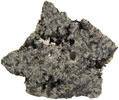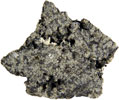


- Meteorites For Sale - Found A Meteorite? - Monthly Favourite - Meteorite Information - Classification List - Meteorite Collection - Media Centre - Home - Search - Site Map - Contact |
|
D'Orbigny (Angrite) - 1.25g Partslice with Vugs/Vesicles The D'Orbigny meteorite was found during July 1979 while ploughing a rock-less field in the south of the Buenos Aires Province, Argentina. Because of its shape it was believed to be an Indian artefact, in particular a mortar, and was kept at the farm. It was later suspected of being a meteorite in 1998 and in 2000 a sample was identified in Vienna as being a very rare Angrite. The stone had a mass of 16.55 kg and had a peculiar shape, somewhat like a loaf of bread but with a gently sloped and fusion crust-covered front with regmaglypts and a concave back side. The front and back sides consist of a medium to coarse-grained ophitic textured rock with a heterogeneous, highly porous coarse-grained rock sandwiched between them. The major minerals are augite, anorthite and olivine. Augite is very common in irregularly shaped open druses. There it forms euhedral elongated prismatic crystals and has a chemical composition similar to the cores of rock-forming augites. Anorthite forms laths which commonly include some olivine or augite. The dense portions of D’Orbigny resembles Asuka 881371 and Sahara 99555 while with the latter, D’Orbigny shares the presence of abundant round vugs. Olivine is very common in the shells of the abundant vugs/hollow spheres. Large (up to centimetre-sized) olivines are scattered throughout D’Orbigny mimicking xenocrysts or forming Olivinite. D’Orbigny is unique in its overall structure, its richness in hollow spheres, the presence of abundant druses containing perfectly crystallized augites and anorthites, the presence of abundant glass and the presence of olivinite rocks with olivines of highly magnesian composition, comparable to olivine xenocrysts from Asuka 881371. This partslice is most likely from the central porous region of the D'Orbigny stone. Vugs/vesicles can clearly be seen alongside the highly porous course-grained matrix. While a little difficult to see in the photos, the vugs do have an extremely thin layer of olivine while a larger crystal is evident to the left. Much of this piece is also occupied by the abundant and irregularly shaped open druses mentioned above. This specimen of the highly unique D'Orbigny meteorite is part of the Meteorites Australia Collection (MA.05.0088).
Back to 'The Unusual Meteorites Features Page' menu...
|
.jpg)
.jpg)
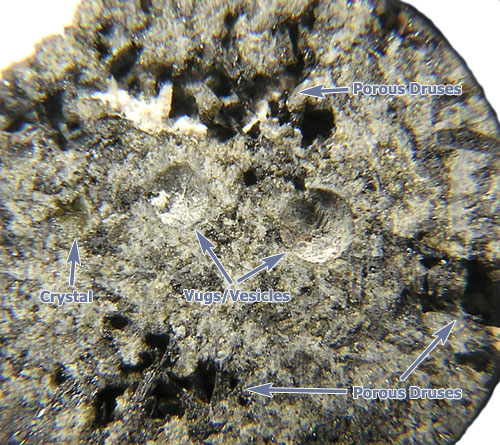
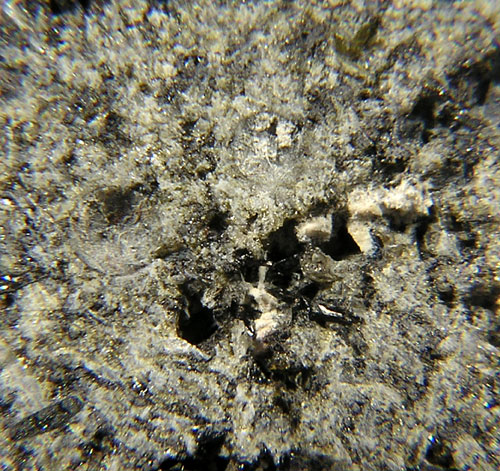
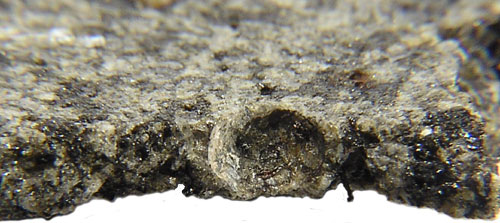
.jpg)
